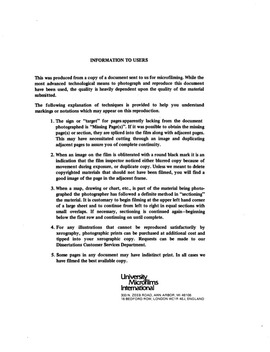| dc.contributor.author | Holt, Jack R., | en_US |
| dc.date.accessioned | 2013-08-16T12:28:20Z | |
| dc.date.available | 2013-08-16T12:28:20Z | |
| dc.date.issued | 1981 | en_US |
| dc.identifier.uri | https://hdl.handle.net/11244/4855 | |
| dc.description.abstract | Photoheterotrophy occurs in Peridinium willei, P. limbatum, P. inconspicuum, and Peridiniopsis polonicum. All species tested exhibited photoheterotrophy except P. volzii. Growth of all species was strongly depressed by addition of lactate and propionate; while additions of glucose, glycerol, malonate and sucrose generally enhanced growth. Those species with apical pores (Peridinium limbatum, P. inconspicuum, and Peridiniopsis polonicum) generally demonstrated more pronounced growth enhancement on organic substrates than did species without apical pores. No species demonstrated dark growth on any organic substrate. | en_US |
| dc.description.abstract | A technique to stain, squash, and enumerate chromosomes of armored dinoflagellates is presented using a cellulase incubation and propionocarmine stain. Chromosome numbers for six freshwater armored dinoflagellates (Peridinium cinctum, P. inconspicuum, P. limbatum, P. volzii, P. willei, and Peridiniopsis polonicum) range from 41 (p. inconspicuum) to 210 (P. cinctum). Evidence is presented to indicate dinoflagellate aneuploidy in culture. | en_US |
| dc.description.abstract | Growth of Peridinium willei, P. volzii, P. cinctum, P. limbatum, and Peridiniopsis polonicum is pH specific while Peridinium inconspicuum shows no pH preference in the range of 5.5-8.5. Growth remained constant for most species tested on ammonium and nitrate from concentrations of 2.94 x 10('-4) to 2.94 mM. Urea and nitrite were universally toxic at 2.94 mM but generally provided growth at lower concentrations. Indeed, urea often provided highest growth rates and was utilized by all six species. Peridiniopsis polonicum could not utilize ammonium or nitrite for growth. | en_US |
| dc.description.abstract | Five Peridinium (P. willei Huit.-Kaas, P.volzii Lemm., P. cinctum (O.F.M.) Ehrenberg, P. limbatum (Stokes) Lemm., and P. inconspicuum Lemm.) and one Peridiniopsis (P. polonicum (Wolosz.) Bourrelly) species were tested for auxotrophy, photoheterotrophy, nitrogen source utilization, pH optima, and chromosome numbers. Peridiniopsis polonicum requires vitamin B(, 12), and Peridinium limbatum requires thiamin for growth. Unlike marine Peridinium species, P. willei, P. volzii, P. cinctum, and P. inconspicuum do not display auxotrophy. Peridinium volzii is strongly inhibited by concentrations of biotin above 1 (mu)gL('-1). | en_US |
| dc.format.extent | xii, 168 leaves : | en_US |
| dc.subject | Biology, Botany. | en_US |
| dc.title | Studies in the dinoflagellate genera, Peridinium and Peridiniopsis. | en_US |
| dc.type | Thesis | en_US |
| dc.thesis.degree | Ph.D. | en_US |
| dc.thesis.degreeDiscipline | Department of Microbiology and Plant Biology | en_US |
| dc.note | Source: Dissertation Abstracts International, Volume: 42-02, Section: B, page: 0484. | en_US |
| ou.identifier | (UMI)AAI8116599 | en_US |
| ou.group | College of Arts and Sciences::Department of Microbiology and Plant Biology | |
